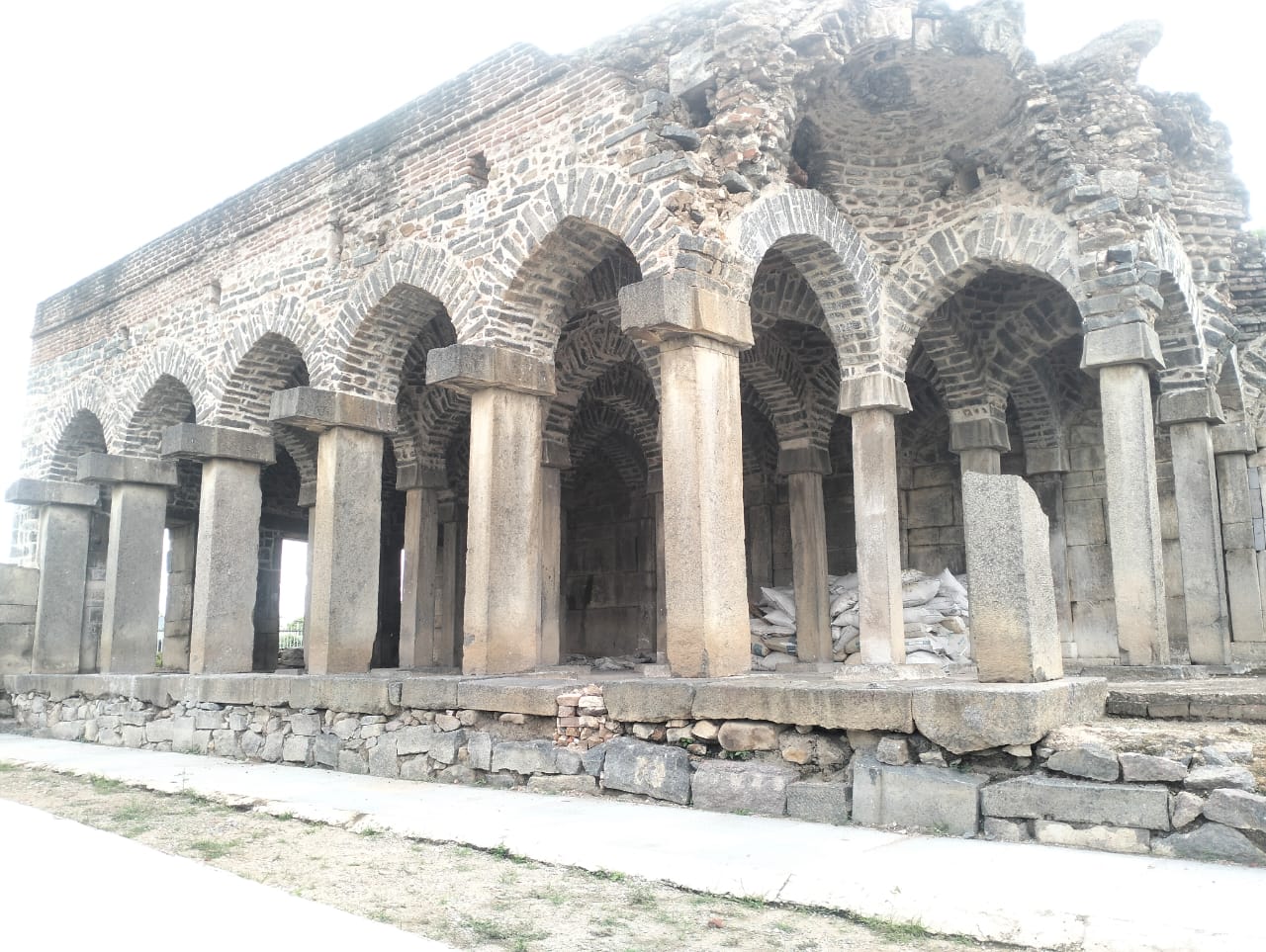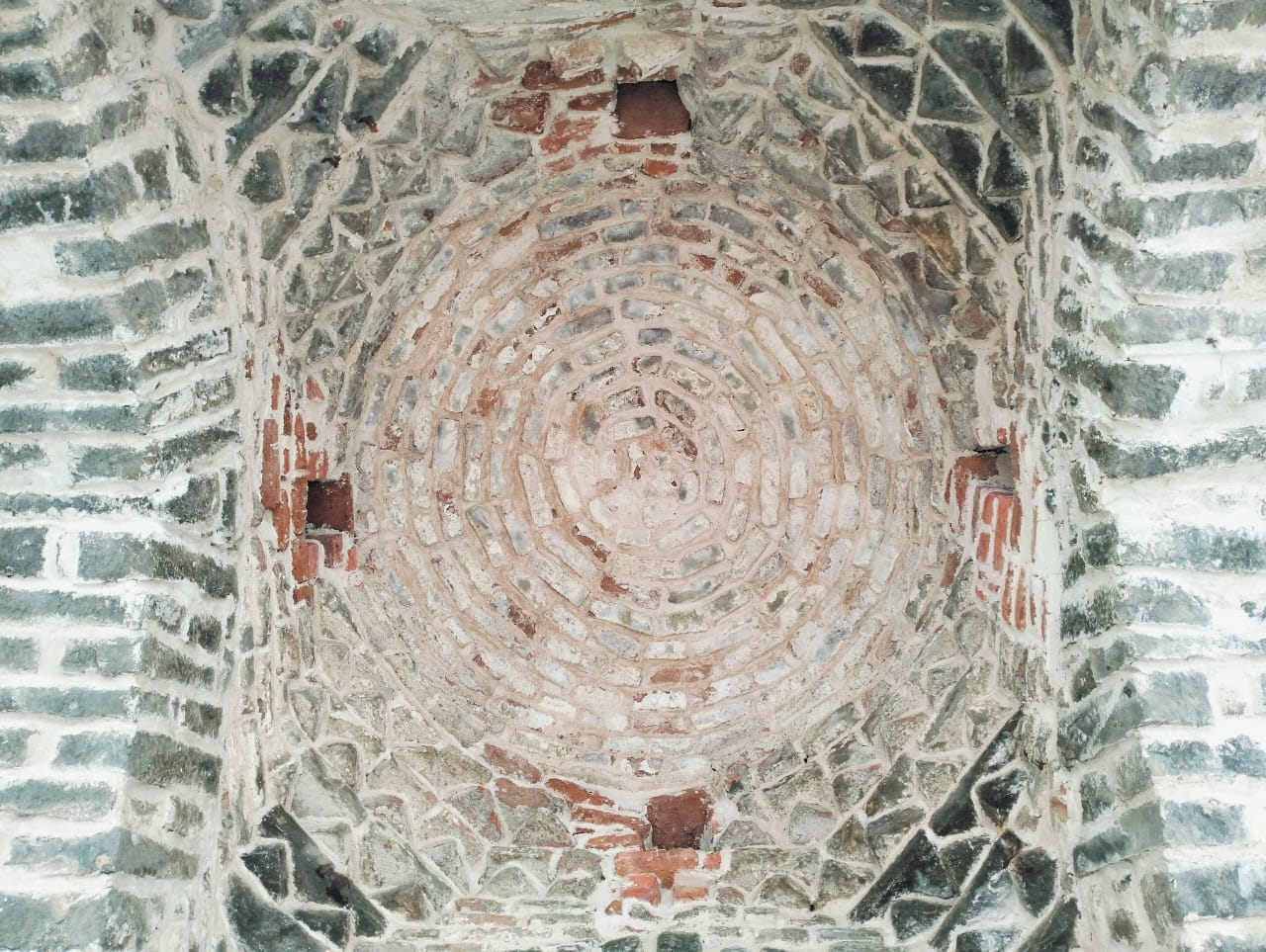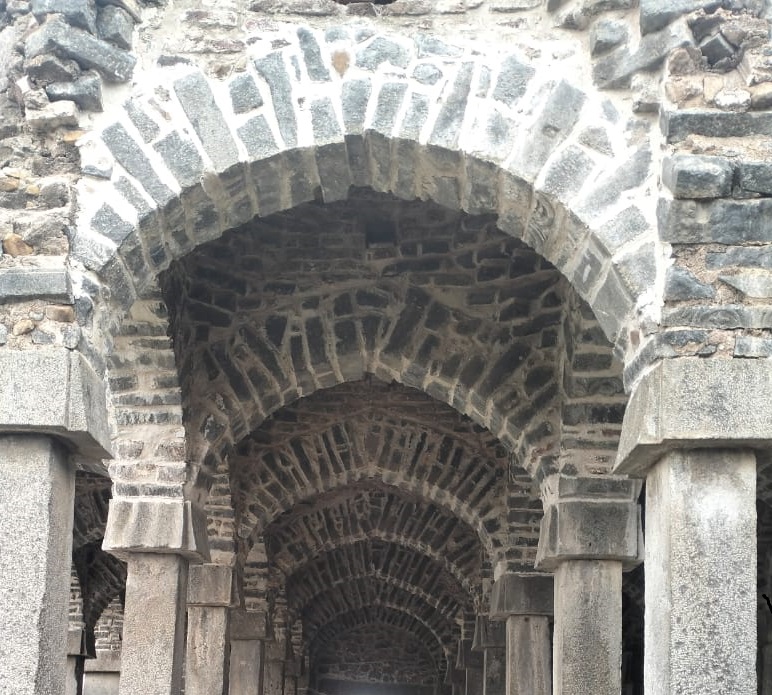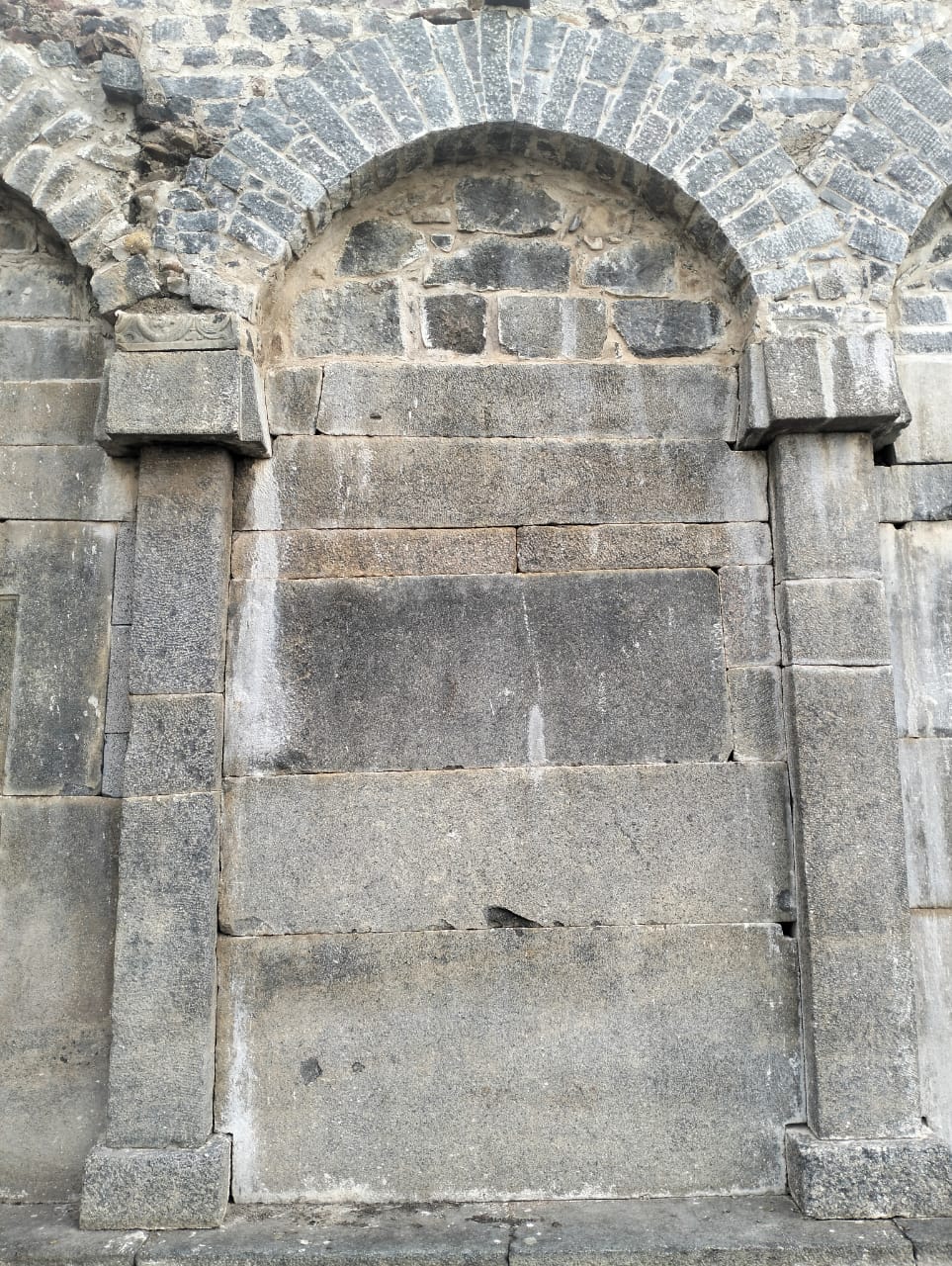Konda Masjid

Konda Masjid
The Konda Masjid, amongst the various other structures built during the Kakatiya dynasty, is located in the area around Warangal Fort, also known as Khila Warangal.
The masjid was built by Ulugh Khan, the brother of Alauddin Khijli, one of the most powerful rulers of the Delhi sultanate, after defeating Kakatiya King Prataparudra.
Architectural Significance:
1.Islamic Style of Architecture:
The Konda Masjid showcases the Islamic architectural style, characterized by elements such as arches, domes, and minarets. This style is distinct from the traditional Hindu temple architecture predominant in the region during the Kakatiya period.

2.Construction Materials:
The monument is constructed using dressed stones and bricks, which were commonly used in Islamic architecture.

3.Arches:
One of the prominent features of the Konda Masjid is its arches. These arches are similar to those found in the Kush Mahal, indicating a blend of local and Islamic architectural influences. Arches are fundamental elements in Islamic architecture, providing both structural support and aesthetic appeal.

4.Wall Construction:
The walls of the Konda Masjid are constructed using stones, similar to the technique used in the Kush Mahal. This method involves meticulously arranging stones to create robust and enduring walls.

5.Arched Interior:
The interior of the Masjid features arched designs, which are not only visually impressive but also serve to distribute weight and enhance the structural integrity of the building. The use of arches inside the mosque is noteworthy and reflects the architectural ingenuity of the period.

Historical Significance:
1.Cultural Synthesis:
The Konda Masjid represents a fusion of Islamic and local architectural styles, highlighting the cultural and religious interactions during the Kakatiya rule. This synthesis is evident in the structural elements and decorative features of the masjid.
2.Kush Mahal Influence:
The similarities between the Konda Masjid and the Kush Mahal, particularly in the use of arches and stone construction, indicate a shared architectural heritage. The Kush Mahal, another significant structure in Warangal, provides insights into the architectural trends and techniques of the time.
Insights:
The Konda Masjid stands as a testament to the architectural diversity and cultural richness of the Kakatiya dynasty, blending Islamic and local elements to create a unique and enduring monument.
Did you like this ?